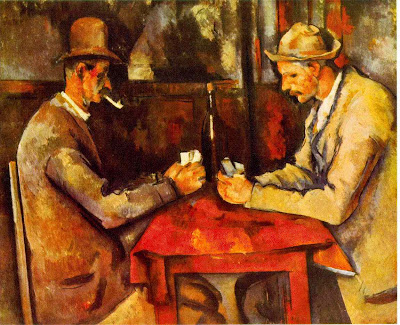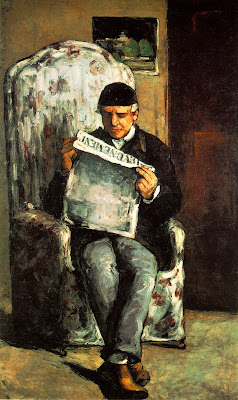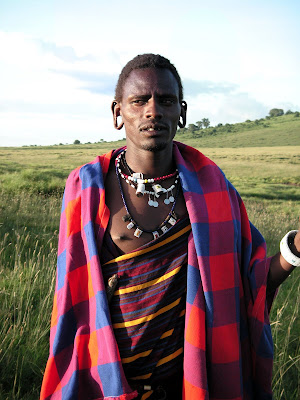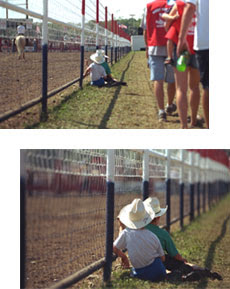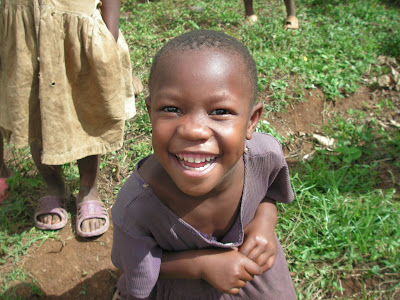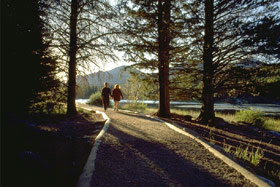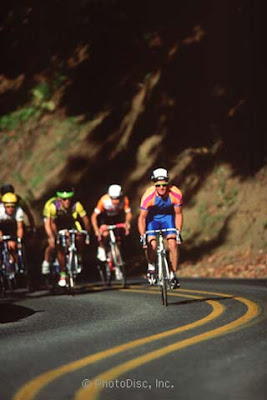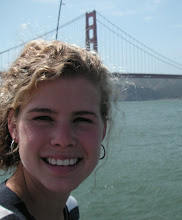PhotorealismPhotorealism (art movement of the late 1960s and early 1970s) is defined by
wikipedia.org as:
"a genre of painting resembling a photograph, most recently seen in the splinter hyperrealism art movement."
The movement consists of projecting a photographic slide onto a canvas to enlarge the photograph to at least ten times the original size in order to preserve accuracy and precise nature of the photograph. It is a movement sometimes compared to the "trompe de l'oeil" movement, where paintings were done in such a realistic way as to look real and three-dimensional rather than two-dimensional.
Most times, the photographs-to-paintings are made in such a way that color and imagery are emphasized using reflections or other tricky techniques that render the painting authentic and hard to replicate without technical proficiency.
Paintings From Photographs - Ralph Goings
Ralph Goings was born in 1928 in California, USA. He is known for being a realist painter, particularly from painting scenes of diners, pickup trucks, and hamburger stands from photographs. He studied at the California College of Arts and Crafts. A quote about his choice of art (from
Wikipedia:Ralph Goings)
. "In 1963 I wanted to start painting again but I decided I wasn't going to do abstract pictures. It occurred to me that I should go as far to the opposite as I could. ... It occurred to me that projecting and tracing the photograph instead of copying it freehand would be even more shocking. To copy a photograph literally was considered a bad thing to do. It went against all of my art school training... some people were upset by what I was doing and said 'it's not art, it can't possibly be art'. That gave me encouragement in a perverse way, because I was delighted to be doing something that was really upsetting people... I was having a hell of a lot of fun..."
includes painting with a brush on canvas, the same technique used in most classical art. He began in the 1960s taking photographs of real scenes and over the years transitioned to taking photos of scenes set up in his studio, where he could control all elements of the process. He then works from the photograph to the canvas and uses the photo less and less as the painting takes on its own. Also similar to classical art, the paintings have a focus on light. In "Ralph's Diner (1982), the light streams in from the window and creates interesting reflections and shadows in the retro diner. The ceiling reflects the light unevenly, and the sleek lines of the countertop are accentuated by the shiny reflections. There are shadows in the right hand side and on the left, in discreet areas, making it more realistic and three dimensional.
 Ralph's Diner, 1982
Ralph's Diner, 1982As Edward Lucie-Smith said,
"One thing that Goings' work does have in common with photographs is its examination of light. Photography records, not objects as things in themselves, but the fall of light on objects—in other words, the way in which light is shaped by anything that interrupts its trajectory from the source."
Ralph goings is fascinated by surfaces and the way that light reacts and reflects off of them. He says this is what drew him to diners in the first place, and after that to taking pictures of the details of ketchep and salt shaker bottles. I chose this image, "Pepper Detail" (1983) to show the way he takes a fraction of an object and also to see more closely the effect of this style of painting from a photograph. The lines are thick, the reflections glossy, and the effect is to take something otherwise mundane and make it interesting.
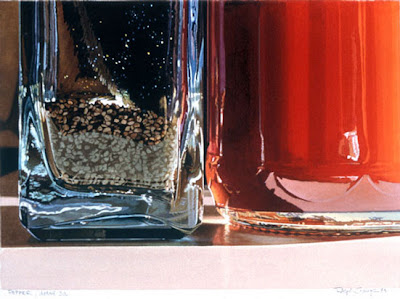 The subject matter and the style
The subject matter and the style are the aspects of Going's painting that set them apart. Goings takes seemingly mundane subjects and presents them in such a way as to point out that it is worth looking at, worth considering the value of. Many paintings are those of pick-up trucks, diners, hamburger stands and others that emphasize the rolling stone nature of American life.
"Diner with Red Door" places a woman in the side of the composition in order to make her seem as just an afterthought, or just in the image by chance. The real focus is the diner, an impersonal place where people come and go.

"Diner with Red Dorr" 1979
"Ford Overdrive" (1970)

"Ford overdrive" 1970
All prints are found at his web page: '
Ralph Goings: Four Decades of Realism'
Photographs of Paintings - Gregory ScottGregory Scott's homepage,
impositions, describes his medium of photographing paintings as, "photographic images of people and places with drawings and paintings." In his
Gregory Scott Artist Statement he claims that he is both a painter and a photographer, and that the two for him have always been closely linked.
His
style or "imposition painting" developed over a period of time, beginning with producing paintings of people very closely cropped so that sometimes body parts were missing. Later, be began to fill in these missing body parts with photographs, and this led to his current style of imposing a painting in a photograph to replace or fill in what is missing. He seeks to explore different approaches to imposing paintings into a photographic medium. The artisic ideas that he explores in his paintings include: "dimensional perception as viewed in a painting vs a photograph; the demarcations between photography and painting; perceptions of photographic truth; and introducing the artist's hand and imagination into the world of the literal photograph." He seeks to achieve emotions of "humor, play, desire, loneliness, and melancholy." He uses especially the titles to help convey meaning. For example, this photograph, entitled "Disconcertainty" is typical of Scott's style. There is a person sitting facing a painting of a road seemingly running through their living room. The torso of the person is a painting imposed on the actual subject with the brace supporting this painting clearly visible. The painting is lonely, as the figure is naked and seems to be troubled by what they see before them, which of course, is a painting. This brings up the question of what is real and what is all appearance, what to believe, and gives the painting and photography medium another dimension.
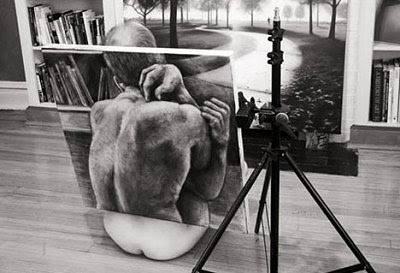
Disconcertainty (2003)
Scott's
technique consist of ways to make the photograph honest and "accessibe to all audiences." For example, showing the supports for the paintings included is done intentionally so as to not conceal that they are paintings. This is to avoid the final piece from looking as if it was digitally produced or in some other way altered. All the alterations, the painting designed to open up the photograph and conceal/reveal some other detail, are meant to be out in the open and easily visible to the viewer, authentic. Also, part of the technique is choosing a title to appropriately convey the meaning, like the title "disconcertainty" of the first example, a hybrid of two words to make a word that gets the message across. I did a double take because it took me a second look to realize that wasn't a word.
The image, "Framed" is consistent with Scott's technique. A man peeks through a canvas which holds the image of another man who seems to be looking at the first. The second is an echo of the first: wearing glasses, no shirt, with short hair" and poses the chicken or the egg question. Who came first? Who is more authentic?
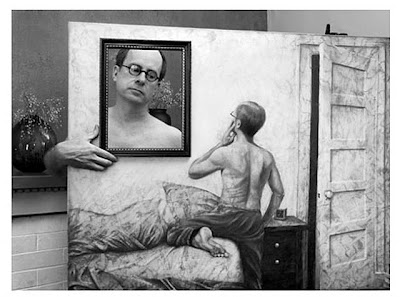
Framed (2003)
The last example is one without people in it, yet consistent with the style all the same. A misty scene of trees has a square canvas covering one section of the scene with a desolate looking tree: bland white background with a single small tree. I wonder if the painting is really covering up something behind it, or if it is making the image more lonely and desolate. While the painting seems to be simple, it adds a more barren and lonely feel to the piece.
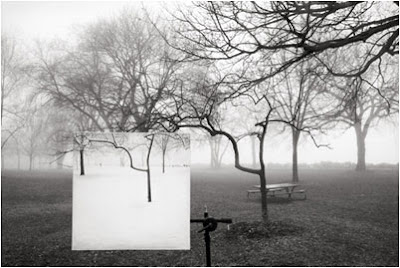
Little Tree (2003)
Gregory Scott Artist StatementMore images at the
edelman gallery. Especially check out: Homage, where the tree and person fuse together, and "Poets' Graveyard" where one canvas is at an angle which makes the photo even more effective.

